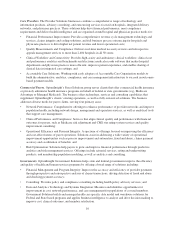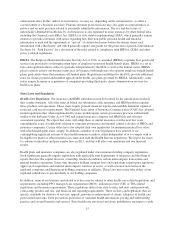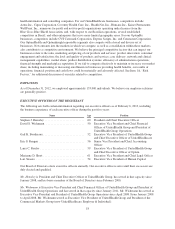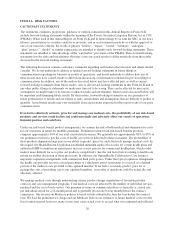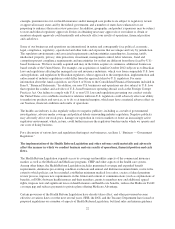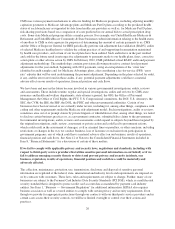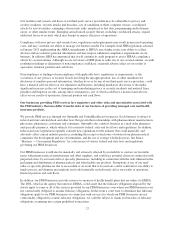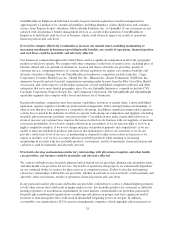United Healthcare 2012 Annual Report Download - page 22
Download and view the complete annual report
Please find page 22 of the 2012 United Healthcare annual report below. You can navigate through the pages in the report by either clicking on the pages listed below, or by using the keyword search tool below to find specific information within the annual report.ITEM 1A. RISK FACTORS
CAUTIONARY STATEMENTS
The statements, estimates, projections, guidance or outlook contained in this Annual Report on Form 10-K
include forward-looking statements within the meaning of the Private Securities Litigation Reform Act of 1995
(PSLRA). When used in this Annual Report on Form 10-K and in future filings by us with the SEC, in our news
releases, presentations to securities analysts or investors, and in oral statements made by or with the approval of
one of our executive officers, the words or phrases “believe,” “expect,” “intend,” “estimate,” “anticipate,”
“plan,” project,” “should” or similar expressions are intended to identify such forward-looking statements. These
statements are intended to take advantage of the “safe harbor” provisions of the PSLRA. These forward-looking
statements involve risks and uncertainties that may cause our actual results to differ materially from the results
discussed in the forward-looking statements.
The following discussion contains cautionary statements regarding our business that investors and others should
consider. We do not undertake to address or update forward-looking statements in future filings or
communications regarding our business or results of operations, and do not undertake to address how any of
these factors may have caused results to differ from discussions or information contained in previous filings or
communications. In addition, any of the matters discussed below may have affected past, as well as current,
forward-looking statements about future results. Any or all forward-looking statements in this Form 10-K and in
any other public filings or statements we make may turn out to be wrong. They can be affected by inaccurate
assumptions we might make or by known or unknown risks and uncertainties. Many factors discussed below will
be important in determining future results. By their nature, forward-looking statements are not guarantees of
future performance or results and are subject to risks, uncertainties and assumptions that are difficult to predict or
quantify. Actual future results may vary materially from expectations expressed in this report or any of our prior
communications.
If we fail to effectively estimate, price for and manage our medical costs, the profitability of our risk-based
products and services could decline and could materially and adversely affect our results of operations,
financial position and cash flows.
Under our risk-based benefit product arrangements, we assume the risk of both medical and administrative costs
for our customers in return for monthly premiums. Premium revenues from risk-based benefits products
comprise approximately 90% of our total consolidated revenues. We generally use approximately 80% to 85% of
our premium revenues to pay the costs of health care services delivered to these customers. The profitability of
these products depends in large part on our ability to predict, price for, and effectively manage medical costs. In
this regard, the Health Reform Legislation established minimum medical loss ratios for certain health plans and
authorized HHS to maintain an annual price increase review process for commercial health plans, which could
make it more difficult for us to price our products competitively. See the risk factor below relating to health care
reform for further discussion of these provisions. In addition, our OptumHealth Collaborative Care business
negotiates capitation arrangements with commercial third party payers. Under the typical capitation arrangement,
the health care provider receives a fixed percentage of a third party payer’s premiums to cover all or a defined
portion of the medical costs provided to the capitated member. If we fail to accurately predict, price for or
manage the costs of providing care to our capitated members, our results of operations could be materially and
adversely affected.
We manage medical costs through underwriting criteria, product design, negotiation of favorable provider
contracts and care management programs. Total medical costs are affected by the number of individual services
rendered and the cost of each service. Our premium revenue on commercial policies is typically at a fixed rate
per individual served for a 12-month period and is generally priced one to four months before the contract
commences. Our revenue on Medicare policies is based on bids submitted in June the year before the contract
year. We base the premiums we charge and our Medicare bids on our estimates of future medical costs over the
fixed contract period; however, many factors may cause actual costs to exceed what was estimated and reflected
20


